13.10.2021
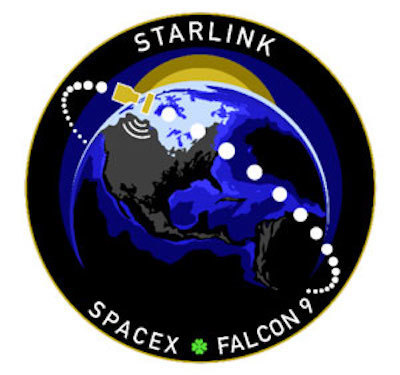
SpaceX schedules Falcon 9’s second West Coast Starlink launch
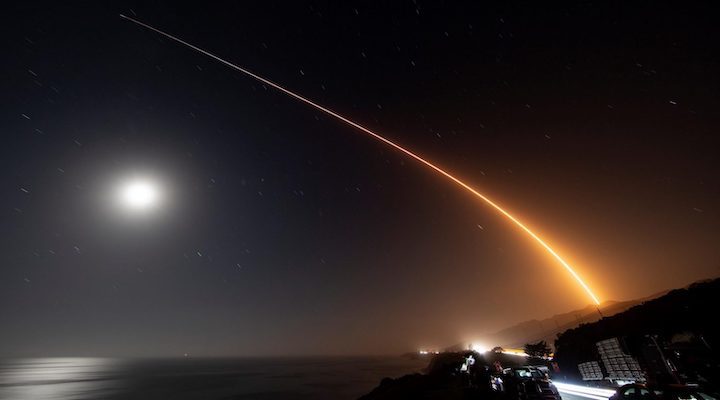
A pair of notices to mariners (NTMs) published earlier this week reveal that SpaceX could conduct its second West Coast Starlink launch as early as Sunday, October 17th.
Used to delineate certain regions mariners should temporarily avoid or heed caution in, NTMs – while cryptic – often reveal roughly when a rocket launch or spacecraft reentry is expected to occur days or weeks before NASA, the US military, or any companies involved announce an official target. That now appears to be the case for SpaceX’s “Starlink Group 2-2” mission, which is set to be the second dedicated launch of polar Starlink satellites. Presumably identical to Starlink 2-1, which successfully launched on a Falcon 9 rocket on September 14th, Starlink 2-2 will likely carry another 51 upgraded Starlink V1.5 satellites.
Each fitted with several custom SpaceX-built lasers known as optical interlinks or OILs, Starlink Group 2 satellites will (roughly) orbit Earth’s poles instead of its equator and will eventually use those lasers to allow the rest of the Starlink constellation to route user communications entirely in space. Whereas current Starlink internet users must live within a few hundred miles of a SpaceX ground station to access the network, a constellation of satellites with laser interlinks could serve anyone on Earth – practically independent of ground station location – by routing user communications through any number of laser-linked satellites.
Once all ~1600 Starlink V1.0 satellites are replaced with V1.5 spacecraft, SpaceX will have effectively created a second internet independent of the millions of miles of copper and fiber optic cables that nearly all modern users rely on. Of course, SpaceX’s Starlink V1.5 and V2.0+ constellation will mainly function as an extension of that existing network, but it will allow unprecedented feats of routing – latency that no wired network can physically match, in other words.
The primary draw for a laser-linked constellation, though, is the ability to connect users to the internet almost regardless of location. On top of hundreds of millions of rural and underserved or unserved customers worldwide, even including those trapped inside restrictive national ‘firewalls,’ an interlinked constellation will allow SpaceX to deliver unprecedentedly high-quality connectivity to ships, planes, trains, and road vehicles. Currently only served by mediocre and marginally reliable geostationary providers at great cost, disrupting those captive markets with a service as many leagues above as Starlink could singlehandedly secure SpaceX billions of dollars of annual revenue.
Soon after the notices to mariners appeared, Next Spacefight’s Michael Baylor confirmed that the Starlink 2-2 mission is scheduled to launch out of Vandenberg Air/Space Force Base no earlier than (NET) 10:34 am PDT (UTC-7) on Sunday, October 17th. The launch window is open for one hour and, like Starlink 2-1, will likely involve a Falcon 9 booster landing attempt a few hundred miles downrange on drone ship Of Course I Still Love You (OCISLY).
It remains to be seen which Falcon booster is assigned to the launch or if SpaceX will static fire it several days before.
Quelle: TESLARATI
----
Update: 20.10.2021
.
SpaceX Postpones Sunday’s Planned Rocket Launch at Vandenberg SFB
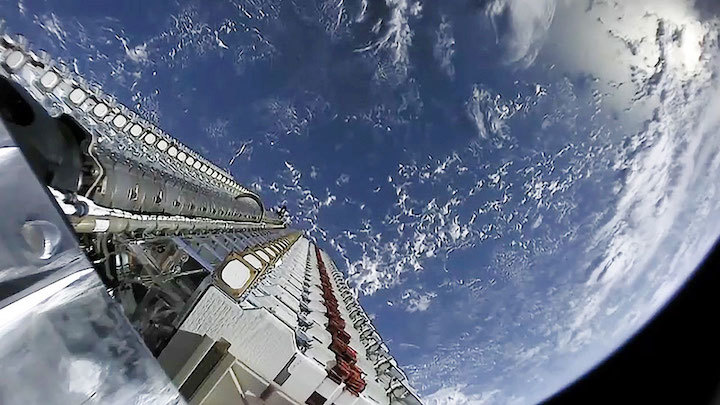
The Space Exploration Technologies Falcon 9 rocket launch planned for this weekend from Vandenberg Space Force Base has been delayed.
Liftoff of the booster from Space Launch Complex-4 on the South Base had been planned between 10:34 a.m. and 11:34 a.m. Sunday.
SpaceX has not explained the reason for the delay, and a new launch date has not been released.
The rocket was set to carry dozens of Starlink satellites, in the second mission for the SpaceX effort to build an Internet constellation in space.
The first hint of a delay occurred earlier this week when a vessel connected with the launch ended up returning to port.
Vandenberg officials also have lifted the mariners’ notice issued for Sunday morning warning boaters to remain out of the ocean area near the southern end of the base where the launch pad is located.
The launch of the West Coast’s first Falcon 9 rocket carrying 51 Starlink satellites occurred in September from Vandenberg.
Dozens of similar launches have occurred from Florida in recent years as the firm continues to build its constellation to provide high-speed Internet service aimed especially at customers in rural and remote areas around the world.
Along with Starlink, the Falcon 9 rocket has a NASA mission on its manifest for this fall.
NASA has dubbed the Double Asteroid Redirect Test, or DART, as a planetary defense mission designed to test drive technologies for preventing an impact of Earth by a hazardous asteroid. DART will be the first demonstration.
After missing the DART’s first planetary window for launch to ensure that the spacecraft is placed where it's needed in space, the team will target the secondary opportunity spanning from late November into mid-February.
Liftoff is planned for 10:20 p.m. Nov. 23, the first chance in that planetary window.
Quelle: Noozhawk
----
Update: 10.11.2021
.
SpaceX ready for back to back astronaut, Starlink launches
Two SpaceX Falcon 9 rockets remain on track to attempt back-to-back astronaut and Starlink satellite launches later this week.
Both SpaceX East Coast drone ships Just Read The Instructions (JRTI) and A Shortfall of Gravitas (ASOG) and two new support and fairing recovery ships (Bob and Doug) are all headed northeast into the Atlantic Ocean, where they’ll soon reach landing zones stationed just ~50 km (~30 mi) apart. As early as 9:03pm EST Wednesday, November 10th (02:03 UTC 11 Nov), the first of those Falcon 9s is scheduled to lift off on its second mission for NASA, sending a new Crew Dragon and four international astronauts on their way to the International Space Station (ISS).
If all goes to plan, less than a day and a half later, a second Falcon 9 rocket will lift off from SpaceX’s other East Coast launch site as part of “Starlink 4-1” – the company’s first dedicated Florida Starlink launch in almost six months.
Starlink 4-1 is scheduled to launch NET 7:40am EST (12:40 UTC) on Friday, November 12th with Falcon 9 booster B1062, a new expendable upper stage, a (likely) reused fairing, and 53 Starlink V1.5 satellites – likely the first of their kind to launch from the East Coast. While the mission profile will be almost identical to all 29 of SpaceX’s dedicated East Coast Starlink launches, it will be targeting a slightly lower and different orbit to kick off the second of five constellation ‘shells’.
Unlike the ~1700 Starlink V1.0 satellites SpaceX launched over the last two years, the Starlink V1.5 satellites the company recently began launching feature a partially upgraded design but are mainly distinguished by the addition of several ‘space lasers’. More officially known as optical interlinks, those lasers will allow Starlink satellites to connect to each other and route communications entirely in orbit, exploiting the vacuum of space to create what amount to wireless fiber-optic links with bandwidth on the order of tens or hundreds of gigabits per second (Gbps). As a result, there’s a good chance that SpaceX will eventually replace the first-generation Starlink V1.0 constellation as soon as possible, leaving an upgraded and laser-linked copycat in their place.
If SpaceX interlinks most or all of its constellation with lasers, it could drastically simplify Starlink ground station operations and cut down on the bureaucratic work required to license and build those stations in virtually every country Starlink wants to operate in. It would also make it far easier for SpaceX to serve unprecedentedly high-quality internet to aircraft and ships – a captive market practically begging for disruption.
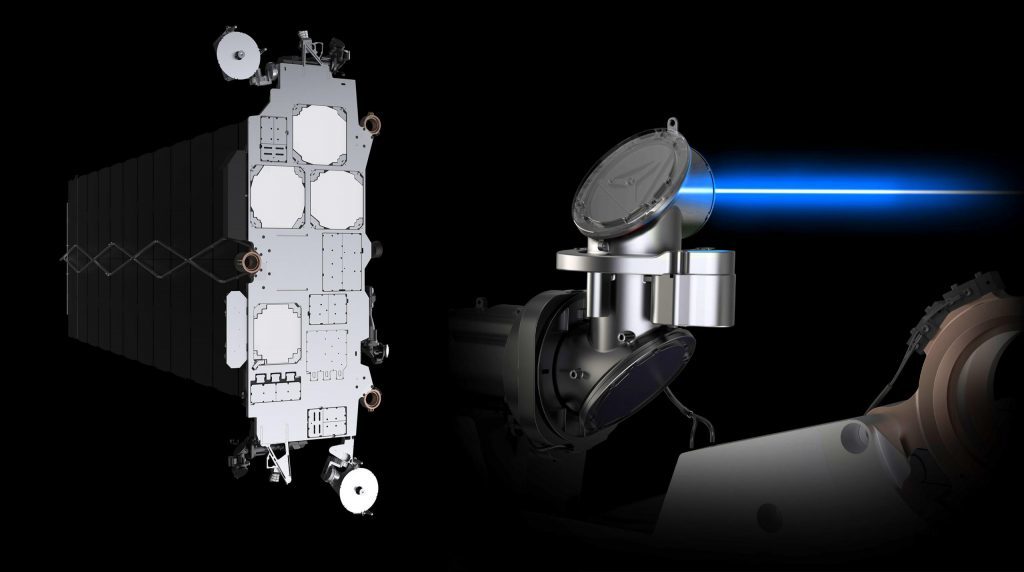
In a prelaunch briefing late on November 9th, SpaceX vice president Bill Gerstenmaier revealed that drone ship Just Read The Instructions (JRTI) – originally meant to support Crew-3’s booster landing – had gotten “beat up” by the Atlantic, forcing it to swap places with A Shortfall of Gravitas (ASOG). It’s unclear if the damage JRTI may or may not have received is enough to require a return to port, which could trigger a week or more of Starlink 4-1 launch delays. For now, though, there are no signs of a delay.
Quelle: TESLARATI
----
Update: 13.11.2021 / 7:00 MEZ
.
SpaceX test-fires Falcon 9 rocket for Starlink launch
Just ten hours after launching a crew capsule from a nearby pad, SpaceX ignited the main engines on a reused Falcon 9 rocket at Cape Canaveral Space Force Station Thursday morning for a brief test-firing ahead of a planned liftoff Friday to begin a new phase of deploying the company’s Starlink satellite internet network.
Already loaded with its payload of 53 satellites, the Falcon 9 launcher ignited its nine Merlin booster engines at 7 a.m. EST (1200 GMT) Friday on pad 40 at Cape Canaveral. The engines ran for around seven seconds, throwing up to full power to generate 1.7 million pounds of thrust.
Clamp restraints kept the 229-foot-tall (70-meter) rocket firmly on the ground at pad 40. SpaceX tweeted less than 90 minutes later to confirm the test-firing, or static fire test, and confirm the launch was on schedule for Friday.
Liftoff with 53 Starlink satellites is scheduled for an instantaneous opportunity at 7:41 a.m. EST (1241 GMT) Friday on SpaceX’s 25th Falcon 9 launch of the year.
In the official launch weather forecast from the U.S. Space Force’s 45th Weather Squadron, meteorologists predict a 60% chance of acceptable conditions for liftoff Friday morning.
Forecasters expect cloudy skies and scattered rain showers around Cape Canaveral, with winds from the northwest at 5 to 10 mph and a temperature around 70 degrees Fahrenheit.
The primary weather concerns Friday are the chances that conditions at the launch base will violate the thick cloud and disturbed weather rules.
“Abundant moisture and vertical forcing along a pre-frontal boundary moving through the area on Friday morning will spur the development of thick low-level cloud layers and scattered showers, with thick clouds and disturbed weather as the main launch concerns for the primary launch window,” the Space Force weather officer wrote in a forecast issued Thursday.
If the launch is delayed to a backup opportunity Saturday morning, forecasters predict an 80% chance of favorable weather for liftoff.
In preparation for the static fire test and launch, SpaceX rolled the Falcon 9 rocket from its hangar to the launch mount at pad 40, then raised the vehicle vertical Wednesday.
For a few hours Wednesday, SpaceX’s two launch pads on Florida’s Space Coast were both occupied by Falcon 9 rockets. A few miles to the north of pad 40, a Falcon 9 rocket was awaiting blastoff from pad 39A at NASA’s Kennedy Space Center carrying four astronauts to the International Space Station.
That mission took off at 9:03 p.m. EST Wednesday (0103 GMT Thursday). The Falcon 9 deployed the Crew Dragon Endurance spacecraft into orbit about 12 minutes later, beginning a 22-hour pursuit of the space station with commander Raja Chari, pilot Tom Marshburn, and mission specialists Matthias Maurer and Kayla Barron.
The successful launch cleared the way for SpaceX to continue preparations for the next Starlink mission a few miles down the road at pad 40.
The 53 satellites stacked on top of the rocket will be the first to populate a new orbital shell in SpaceX’s Starlink fleet.
Predicted orbit data shared by SpaceX with satellite trackers and space traffic managers indicated the mission will aim to release the 53 satellites into an orbit tilted 53.2 degrees to the equator, with a high point, or apogee, of 210 miles (339 kilometers), and a perigee, or low point, of 131 miles (212 kilometers).
SpaceX’s Falcon 9 rocket will head northeast from Cape Canaveral, and shed its first stage booster about two-and-a-half minutes into the mission. The first stage is designated B1058 in SpaceX’s inventory of reusable rockets, and is a veteran of eight prior missions, beginning with the historic launch of SpaceX’s first crew test flight for NASA in May 2020.
The booster will attempt to land on SpaceX’s drone ship “Just Read the Instructions” in the Atlantic Ocean, while the second stage will fire into orbit with a single burn of its Merlin engine. Deployment of the 53 Starlink payloads is expected at T+plus 15 minutes, 31 seconds, according to a mission timeline provided by SpaceX.
Most of the Starlink satellites launched so far have deployed into a 341-mile-high (550-kilometer), 53-degree inclination orbit, the first of five orbital “shells” the company plans to complete full deployment of the Starlink network. SpaceX completed deployment of satellites in that shell with a series of Starlink missions launched from Cape Canaveral from May 2019 through May of this year.
Since May, SpaceX has rushed to complete development of new inter-satellite laser terminals to put on all future Starlink satellites. The laser crosslinks, which have been tested on a handful of Starlink satellites on prior launches, will reduce the reliance of SpaceX’s internet network on ground stations.
The ground stations are expensive to deploy, and come with geographical — and sometimes political — constraints on where they can be positioned. Laser links will allow the Starlink satellites to pass internet traffic from spacecraft to spacecraft around the world, without needing to relay the signals to a ground station connected to a terrestrial network.
The completion of the first Starlink “shell” enables the network to provide high-speed, low-latency internet services to lower latitudes, such as the southern United States. The partial deployment of satellites into the first orbital shell initially provided service over northern regions of the United States, Canada, and Europe, as well as higher-latitude regions in the southern hemisphere.
SpaceX, founded and led by billionaire Elon Musk, is currently providing interim internet services through the Starlink satellites to consumers who have signed up for a beta testing program.
In September, SpaceX launched the first batch of 51 Starlink satellites into a 70-degree inclination orbit on a Falcon 9 rocket from Vandenberg Space Force Base. That orbital shell will eventually contain 720 satellites at an altitude of 354 miles (720 kilometers).
Aside from the 53-degree and 70-degree orbital shells, SpaceX’s other Starlink layers will include 1,584 satellites at 335 miles (540 kilometers) and an inclination of 53.2 degrees, and 520 satellites spread into two shells at 348 miles (560 kilometers) and an inclination of 97.6 degrees.
The satellites awaiting launch Friday will unfurl their solar panels and switch on their plasma engines after separating from the Falcon 9 rocket, beginning maneuvers to climb into a circular orbit 335 miles above Earth to begin filling the 53.2-degree inclination shell.
SpaceX has regulatory approval from the Federal Communications Commission for approximately 12,000 Starlink satellites. The company’s initial focus is on launching 4,400 satellites on a series of Falcon 9 rocket flights. SpaceX’s next-generation launcher, a giant rocket called the Starship that has not yet reached orbit, may eventually be tasked with launching hundreds of Starlink satellites on a single mission.
The launch Friday will bring the total number of Starlink spacecraft SpaceX has launched to 1,844 satellites, including failed and decommissioned spacecraft, adding to the largest fleet ever put into orbit. It will be the 31st dedicated Falcon 9 launch for the Starlink network.
SpaceX builds the Starlink satellites, each with a mass of about a quarter-ton, in a factory in Redmond, Washington.
A tabulation by Jonathan McDowell, an astronomer and respected tracker of spaceflight activity, shows SpaceX currently has 1,454 operational Starlink satellites, with nearly 100 additional craft moving into their operational positions in orbit.
Quelle: SN
+++
Update: Scrub! SpaceX is not moving forward with this launch due to inclement weather around the pad and downrange in the Atlantic Ocean. The next attempt is set for 7:19 a.m. Saturday, Nov. 13.
Quelle: Florida Today
----
Update: 14:00 MEZ
.
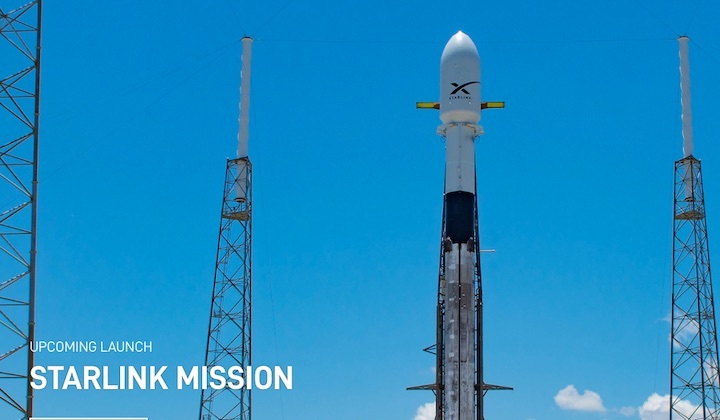
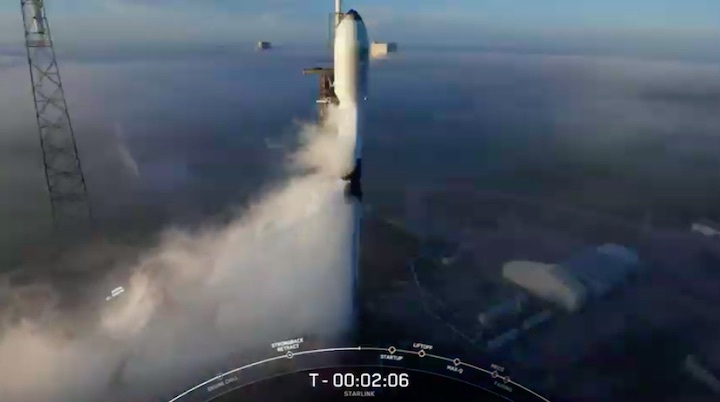
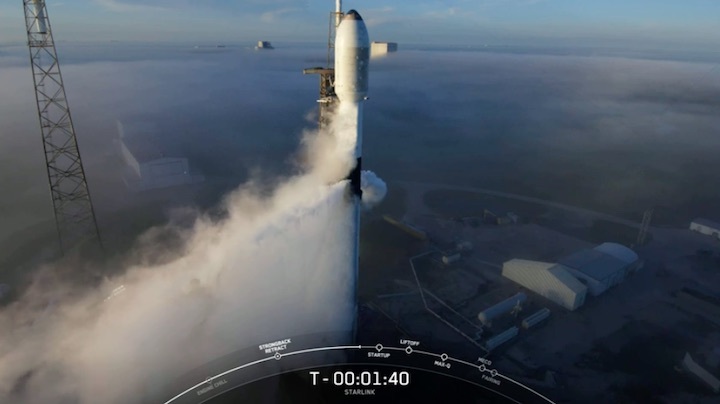
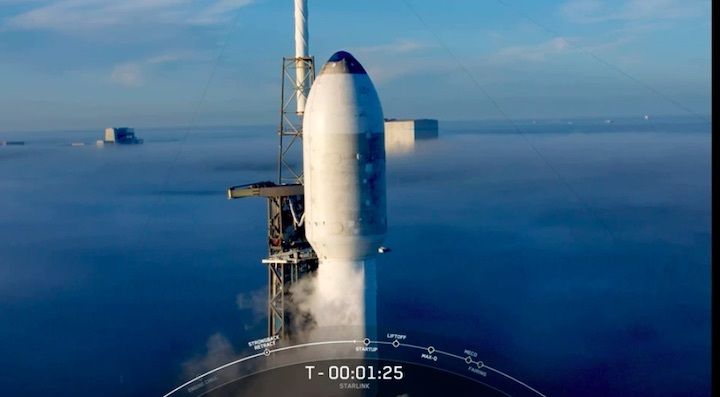
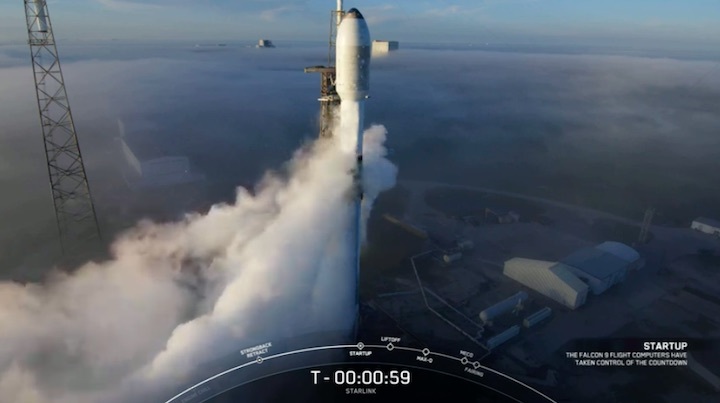
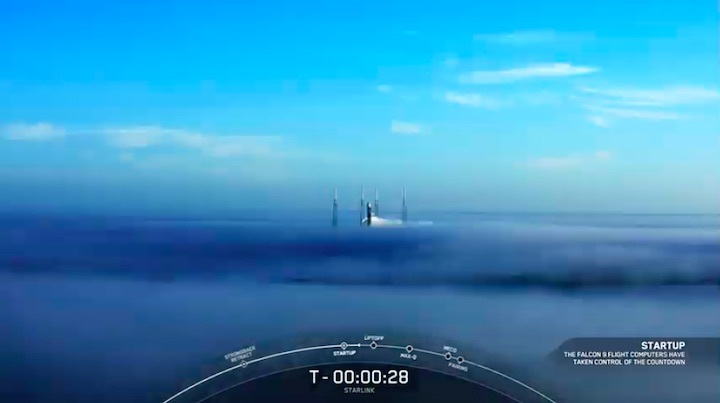
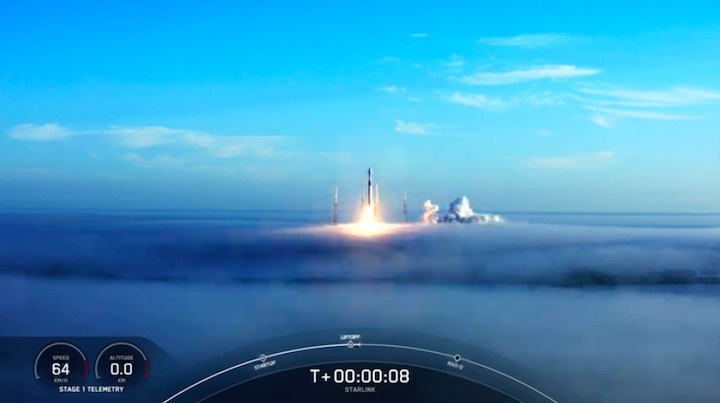
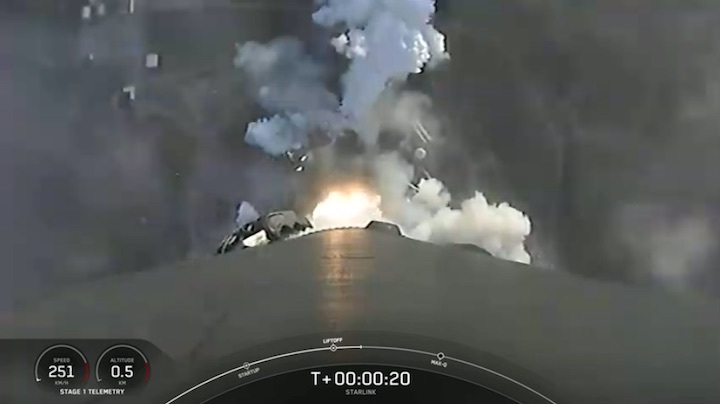
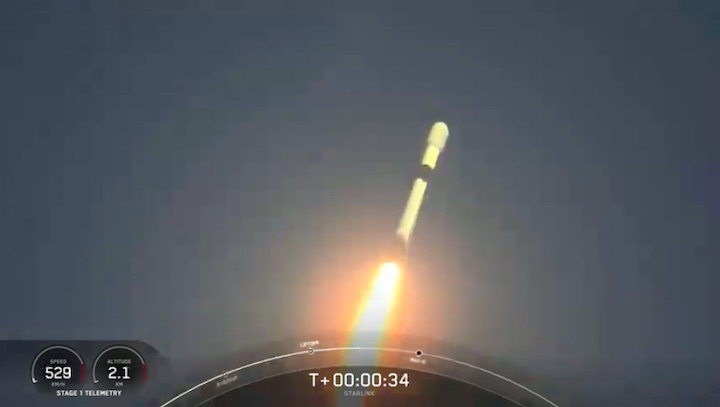
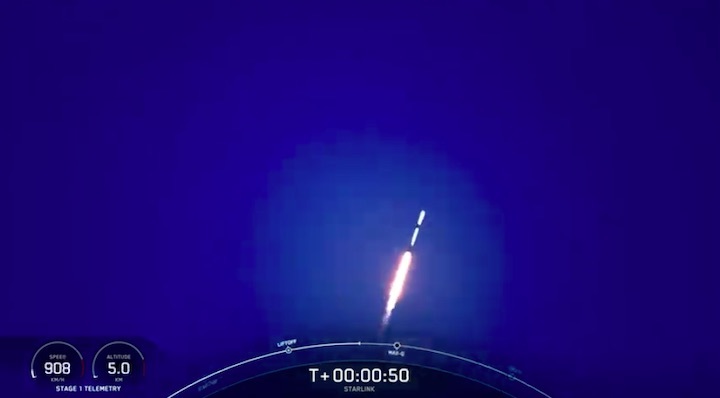

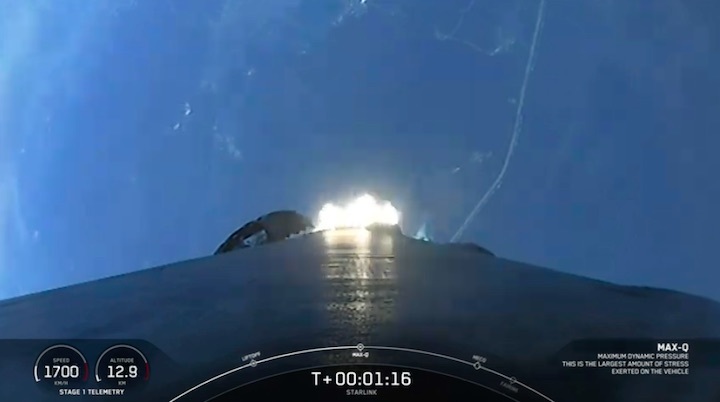
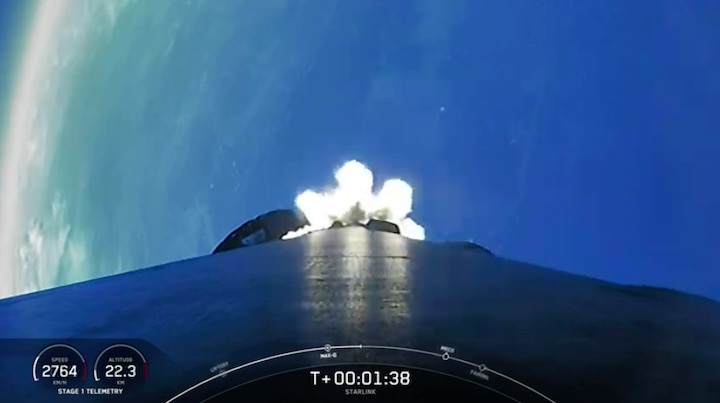
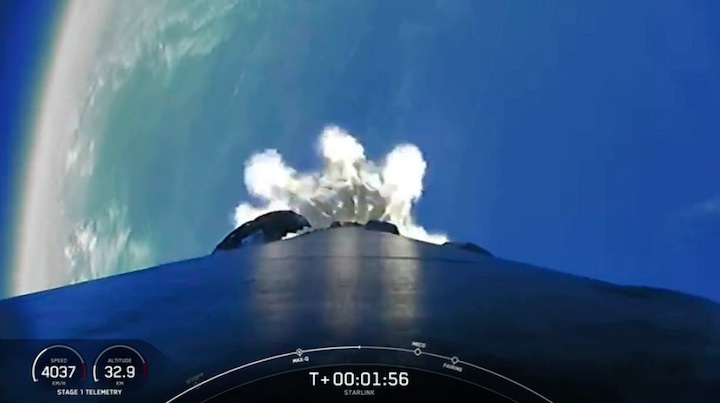
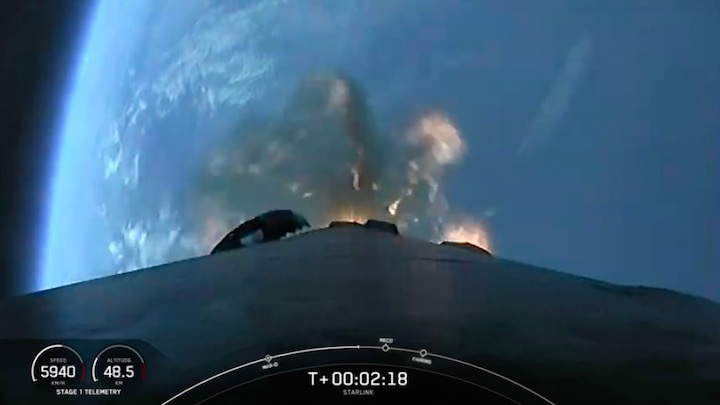
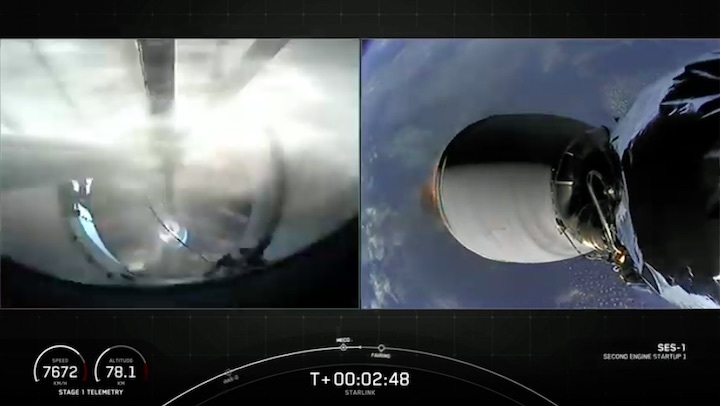
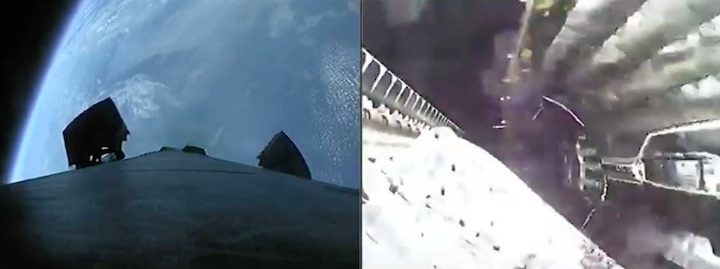
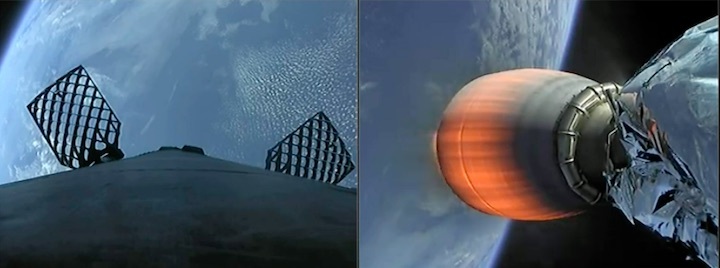
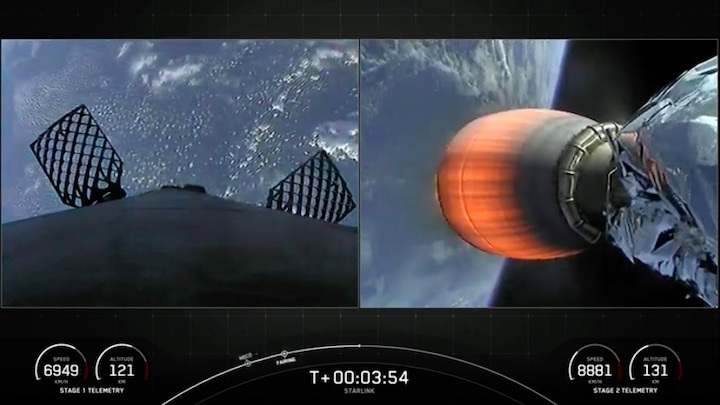
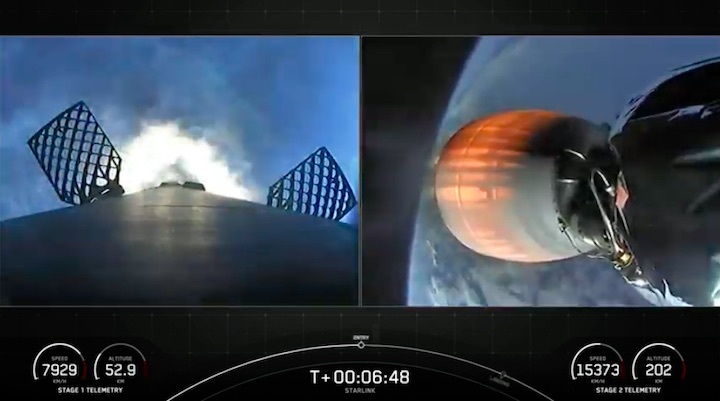
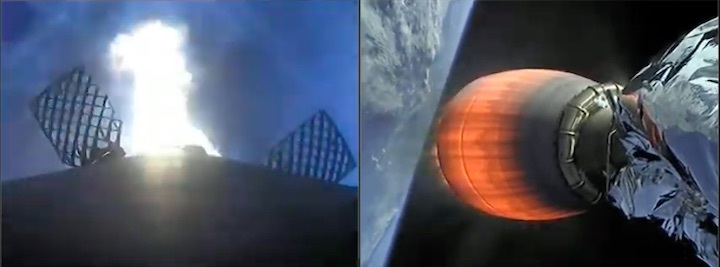
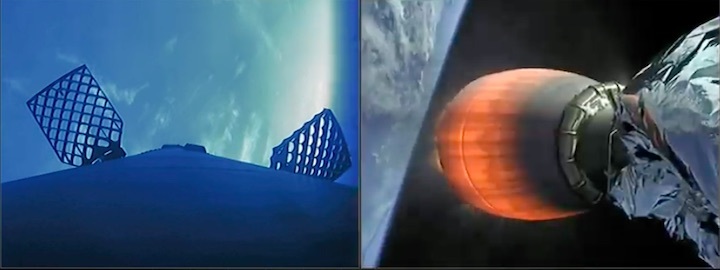
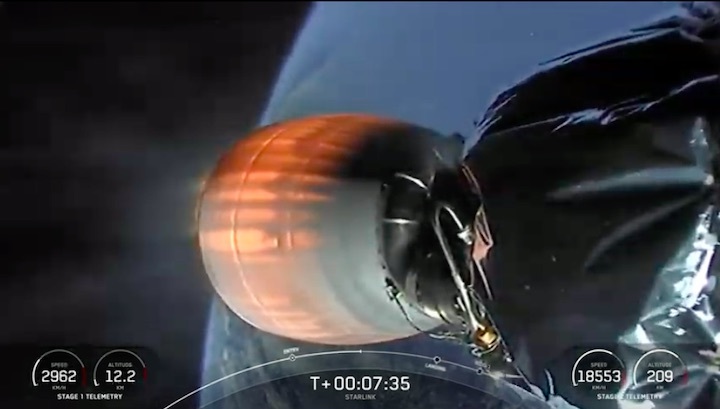
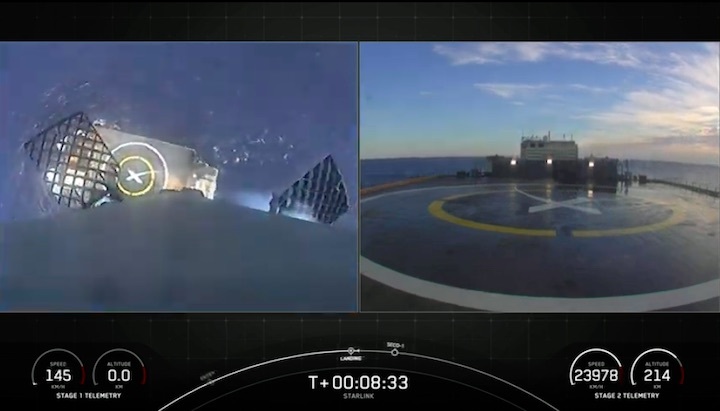
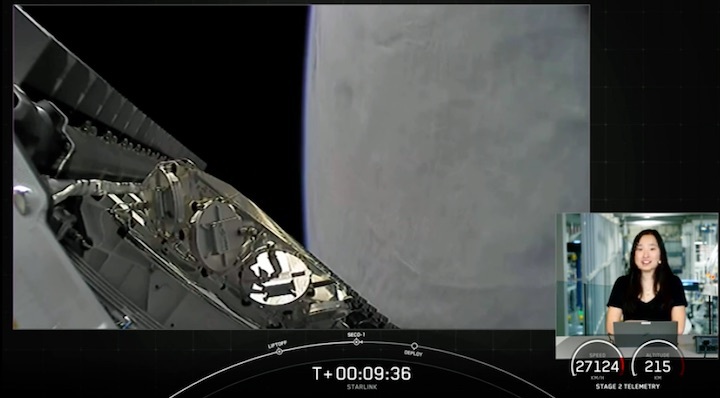

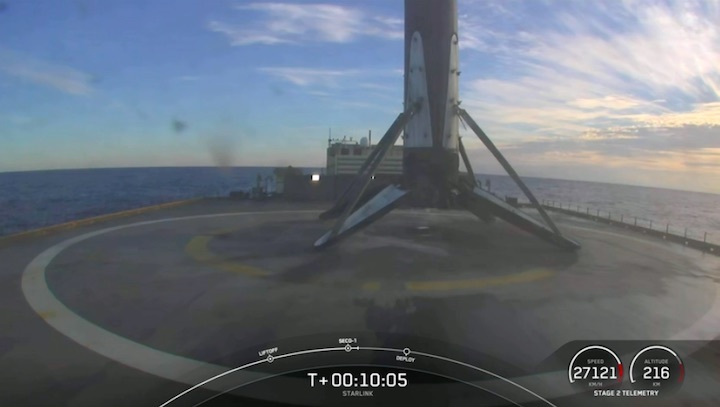

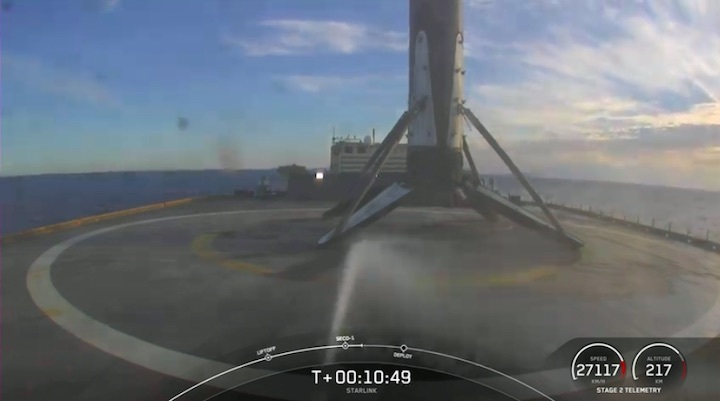
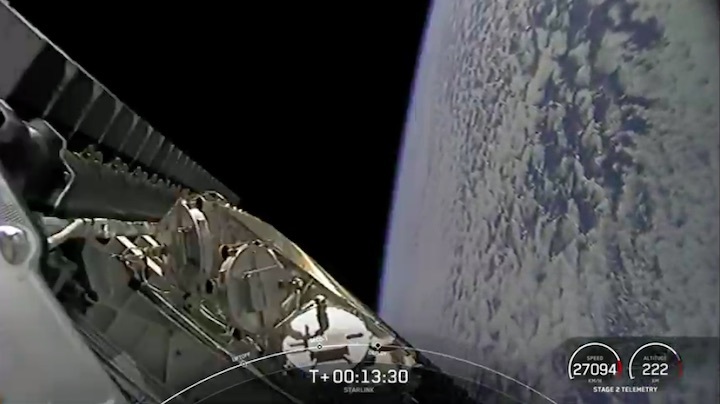
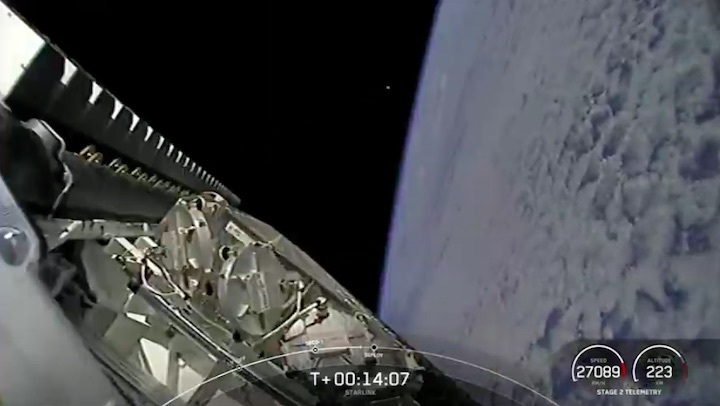
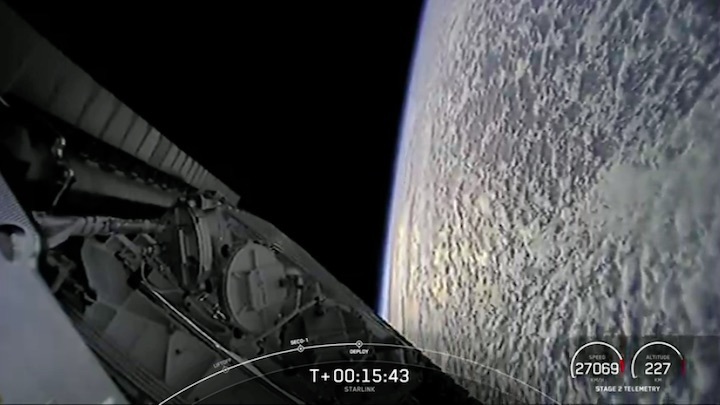
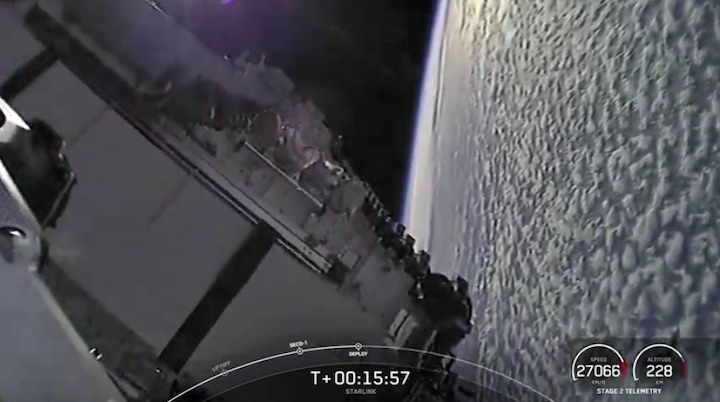
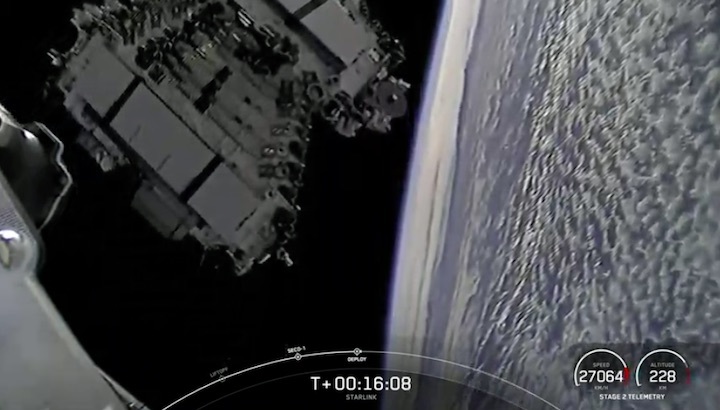
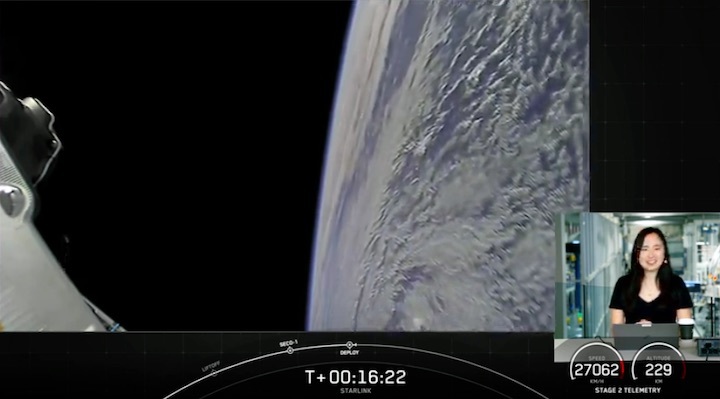

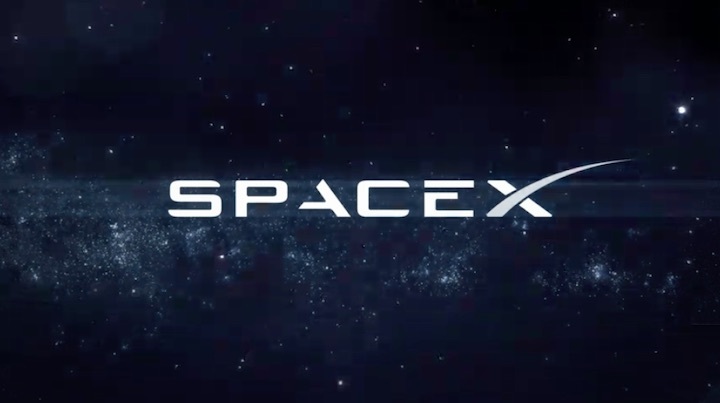
Quelle: SpaceX
